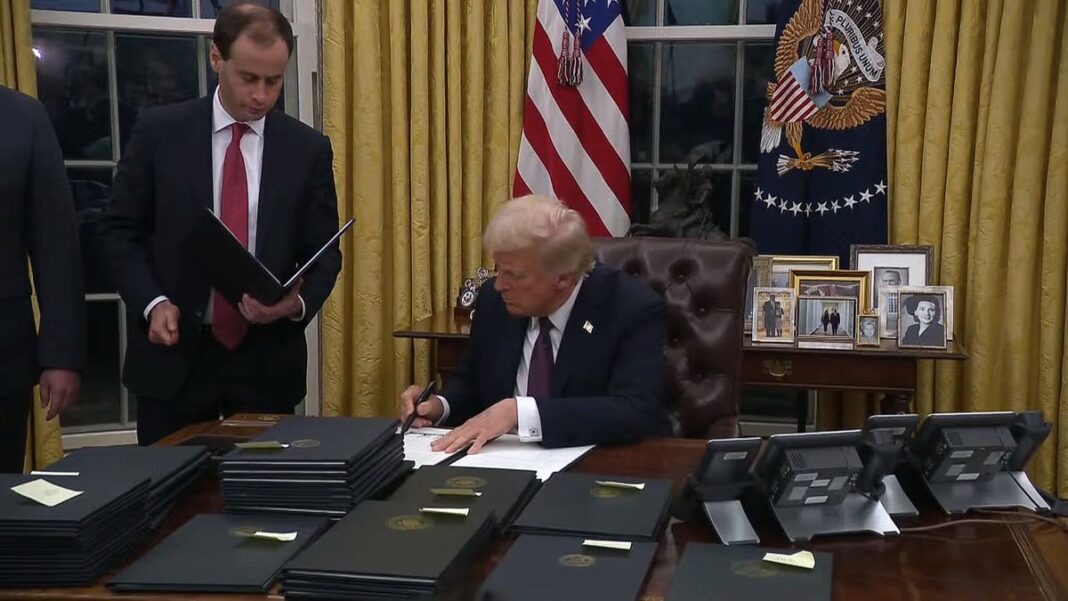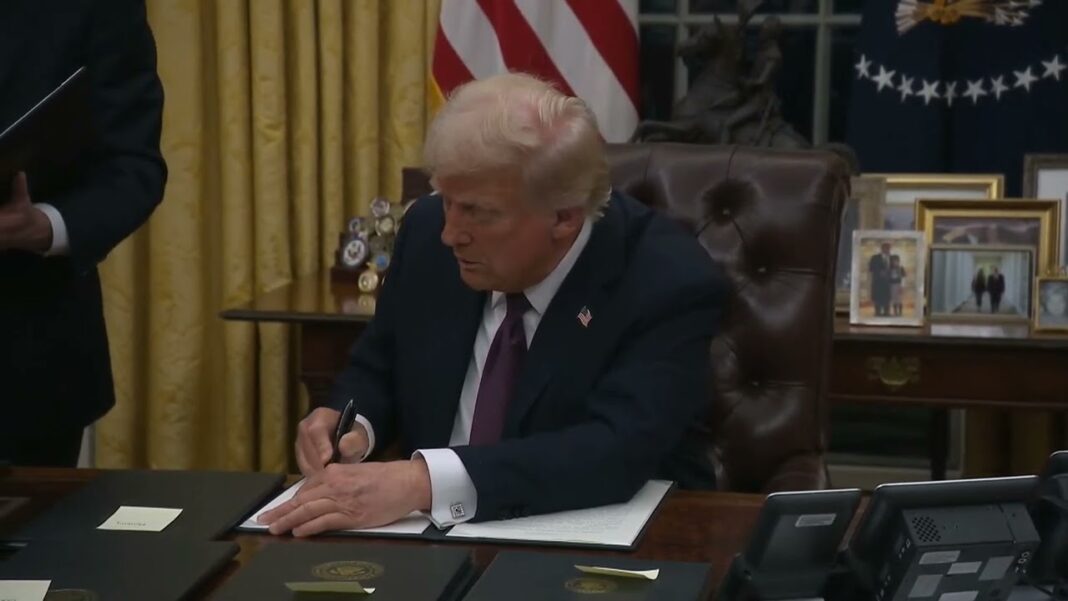
On his first day in office, Trump issued seven executive orders cutting the size and costs of the federal workforce.
WASHINGTON–President Donald Trump wasted no time following his Jan. 20 swearing-in to sign dozens of executive orders, including seven specifically aimed at fundamentally changing the culture, costs, and size of the federal workforce.
Most immediately, Trump ordered the 2.3 million career civil service government employees to report for work at their official duty stations, thus ending the teleworking started in 2020 because of the COVID-19 pandemic.
A second order directed federal officials to freeze all hiring for positions vacant as of Jan. 20 and bar the creation of new jobs. The federal government hired 631,639 new civilian workers from 2020 to 2024, an annual average of 126,327, according to FedScope.
The same order also directed the directors of the White House Office of Management and Budget (OMB) and the U.S. Office of Personnel Management (OPM) to work with the newly created Department of Government Efficiency (DOGE) to “submit a plan to reduce the size of the federal government’s workforce through efficiency improvements and attrition.” The order did not specify how many jobs are to be eliminated.
Several of the remaining five orders on the civil service are already hotly contested by congressional Democrats with large numbers of federal employees in their districts and states, as well as by professional associations and labor unions.
The most controversial is the return of Schedule F, an executive order that Trump signed in 2020 only weeks before losing his reelection campaign to Biden. Now renamed as the “Schedule Policy/Career,” the measure is needed, according to the Trump White House, because removing an incompetent government worker typically takes at least 18 months and can go much longer.
“Only 41 percent of civil service supervisors are confident that they can remove an employee who engaged in insubordination or serious misconduct. Even fewer supervisors—26 percent—are confident that they can remove an employee for poor performance,” the order stated.
The Schedule Policy/Career reforms concern the approximately 7,000 members of the Senior Executive Service (SES), who earn between $180,000 and $246,000 annually. These positions are the top policy-making jobs that career service employees can occupy. The order could cover additional positions below the SES in the future.






